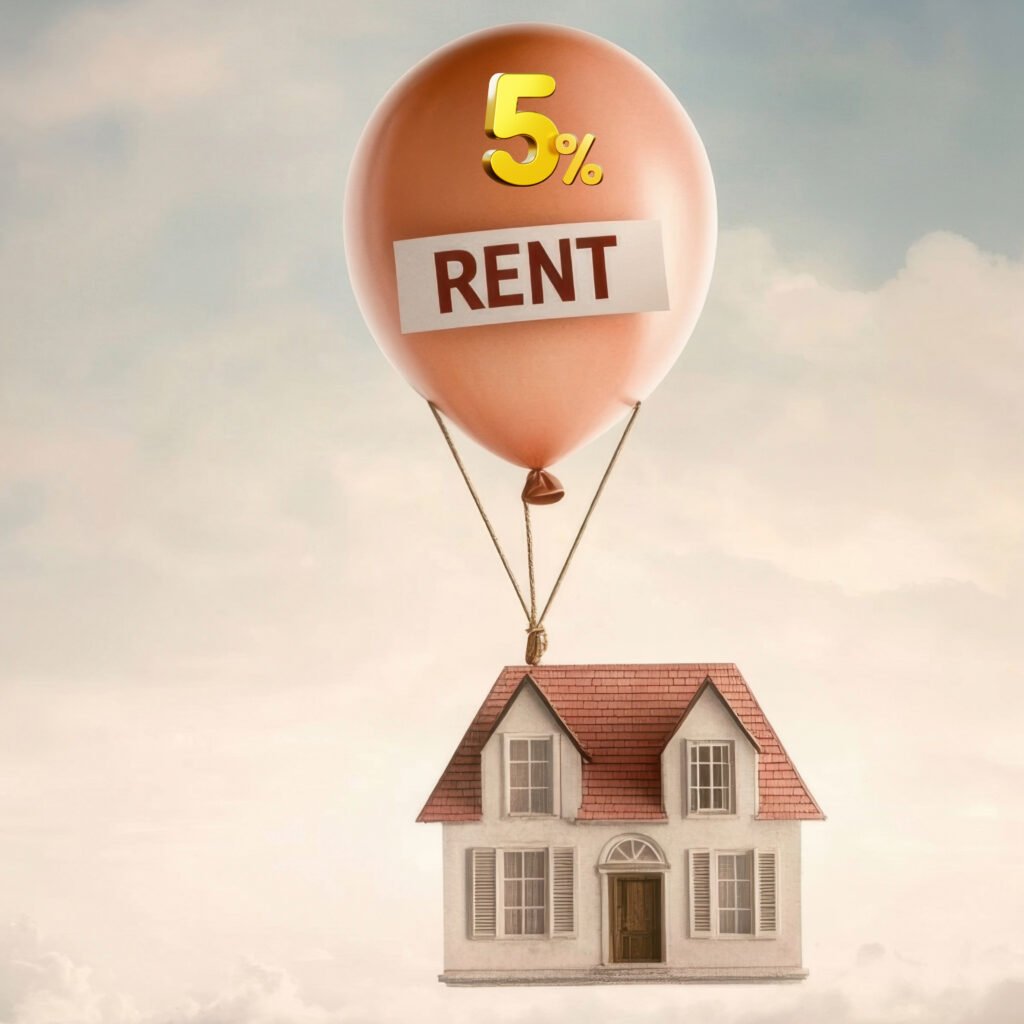The UK’s private rents grew by 5% in the year to October, although the pace of growth has begun to ease, the Office for National Statistics says.
The annual rise seen in September was 5.5% and the average monthly rent is £1,360.
England’s average was up 5% to £1,416, Wales saw a stronger 6.7% increase to £817 and Scotland recorded a 3.4% rise, taking average rents there to £1,008.
Northern Ireland’s figure rose 6.6% to £866 in the year to August.
Stark regional differences
Regional rent prices in England show stark differences with the North East seeing the highest annual rent inflation at 8.9%
Yorkshire and the Humber posted the lowest rise at 3.8%.
Property type also played a clear role with detached homes carried the highest typical rent at £1,550.
Flats and maisonettes saw the lowest at £1,331.
Larger homes with four or more bedrooms averaged £2,027, compared with £1,103 for one bed properties.
House prices rise by 2.6%
Alongside the rent price data, the ONS also reported that house prices rose at a slower pace in the year to September.
The average UK home reached £272,000, an annual increase of 2.6%.
That is down from 3.1 percent growth in August.
England’s average price rose to £293,000, a 2% annual uplift.
Wales recorded a 2.7% rise to £209,000, up from 1.8% growth the previous month.
Scotland saw stronger movement, with prices climbing 5.3% to £194,000.
Northern Ireland posted the sharpest change overall, with average values reaching £193,000, a 7.1% increase compared with a year earlier.
Property sector reaction on the rent rise slowdown
Alex Upton, the managing director of specialist mortgages at Hampshire Trust Bank, said: “While rents continue to rise, the rate of growth has been slowing for some time.
“Even so, the conditions for further increases remain.
“The Renter’ Rights Act is already prompting landlords to reassess their position.
“Some are choosing to exit the market, while others are adapting by restructuring portfolios, exploring incorporation, or planning upgrades to meet future requirements.”
Nathan Emerson, Propertymark chief executive, said: “An increase in rental prices highlights the continuing pressures faced by the private rented sector.
“While rising rents may reflect strong demand and limited supply, they also intensify the affordability challenges many tenants are already experiencing.
“Letting agents and landlords will need to navigate these conditions carefully, ensuring any increases remain fair and sustainable.
“Policymakers must recognise that persistent rental inflation points to a system struggling to meet demand and respond with measures that encourage more homes into the sector rather than driving landlords out.”
Louisa Sedgwick, the managing director of mortgages at Paragon Bank, said: “Rental inflation may be easing, but that doesn’t mean pressure in the private rented sector has disappeared. “Many tenants still face high rents, and the underlying structural issue remains unchanged, with demand continuing to outstrip supply.
“Boosting the number of homes available to tenants is crucial and to achieve that means creating an environment where investment in the sector is not only viable but encouraged.”
Richard Donnell, executive director of research at Zoopla, said: “The last house price index data shows a slowdown in house price and rental inflation as affordability pressures bite.
“This slowdown is expected to continue into 2026.
“More first tome buyers and lower migration for work and study is easing the pressure on rents, with rents for new lets rising at their lowest level for four years.”

